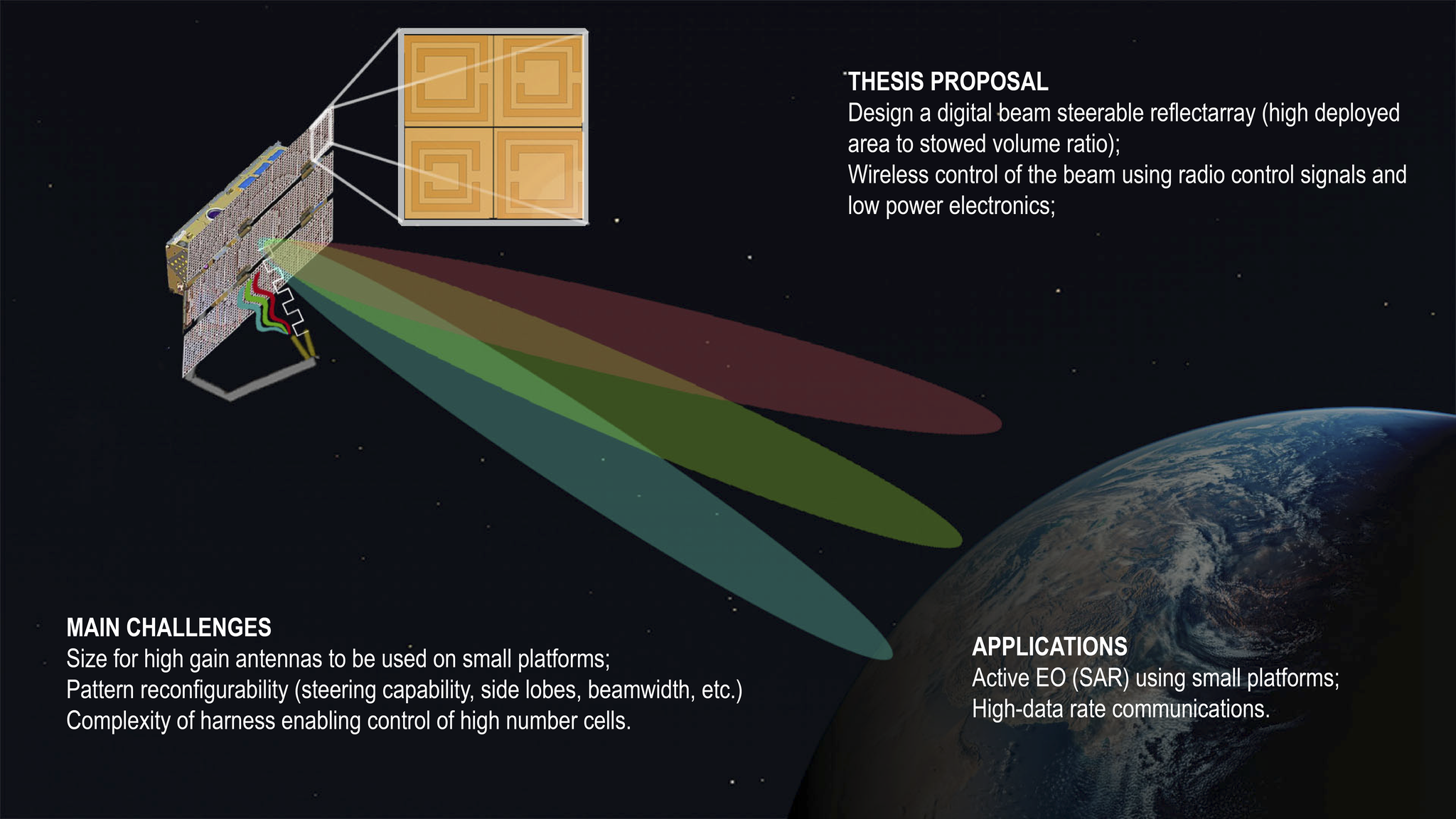One of the RF challenges in space is related to equipment size and mass optimization for the desired performance. A reflectarray antenna is a promising choice to maximize the ratio between antenna effective deployed area and stowed volume [1]. Steering capabilities with reconfigurable reflectarrays have already been proven [2-6]. This PhD thesis addresses the design and testing of a wireless controllable electronic beam steerable reflectarray. It will be composed of a two-dimensional array of identical tiles, allowing it to be modular. Each tile will be composed of an array of unit cells, where these will have an active low power device, e.g. varactor diodes, to control their reflection phase. Short radio control signals, based on a simple modulation, will be sent by a separate feed providing the commands for specific antenna pattern configurations. These commands will be interpreted and decoded by a low footprint circuit, the interpreter, embedded on the back of each tile, that will further control the phase elements of each unit phase cell. This circuit will be composed of an RF detector and FPGA and is of the novel ideas that this PhD thesis will address. The only electrical connection between the reflectarray and the satellite platform will be a low power energy supply bus. A reflectarray presents a simpler planar structure comparing to the conventional reflectors. The latter topology only allows for feed or satellite mechanical steering, which is slower, bulkier and power costly [7]. Phased arrays of active antennas need beamforming networks, increasing losses and requiring both more RF power to compensate and a heat dissipation support structure, while a reflectarray concentrates its transmitted power in one feed. Such reflectarray advantages can compensate for its lower efficiency. A hybrid approach with a fixed reflector and a feed array would also provide good RF performance and steerable capabilities, however, it becomes complex and thus cost inefficient.

